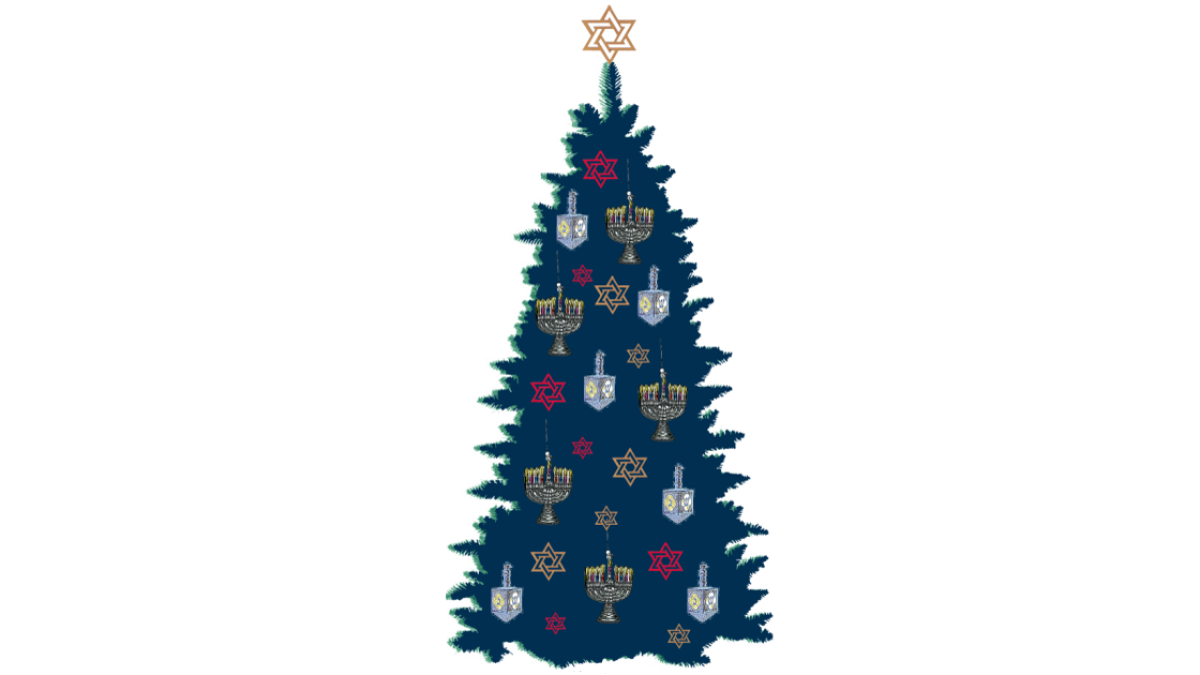Op-Ed: Itās beginning to look a lot like 24 hours of freedom

I have a long and complicated history with Christmas. Most Jews do. As a kid, I felt the pangs of being shunned by Santa. I yearned to climb onto his lap at the department store and tell him my darkest consumer desires, but my mother always said no.
In my early 20s I married a non-Jew, and while she never said she wanted a tree, I think a tree would have made her very happy. Even a tree decorated without Christian religious symbols ā a holiday tree, a large house-plant type tree. Did I consider it? Did I take a hint? No. I was an anti-Christmas tree fanatic. I didnāt always fast on Yom Kippur or keep the Sabbath or even go inside a synagogue for years at a time. I might not have known what to embrace as a conflicted secular Jew but I knew what to avoid: conifers.
Other Jews around me were falling fast. Friends of mine, liberal Reform Jews I had grown up with, suddenly had Christmas trees. I couldnāt understand it. To me, it was just something you donāt get when youāre a Jew. Like snow in Florida.
Today, 1 in 3 Jews has a Christmas tree, according to a recent Pew Research Center poll. One in three. I still donāt. I like being different. I like the outsider status that not celebrating Christmas gives me. Donāt get me wrong, I think itās a beautiful holiday. And I donāt want it neutered. Iām fine with Christmas trees on public grounds.
Although Iām a big fan of the separation of church and state, Iām not happy when well-meaning groups sue cities to make sure local governments give equal time to Hanukkah. Hanukkah canāt hold a menorah to Christmas. Hanukkah is a second-tier Jewish holiday. It doesnāt even crack the top five, coming in behind Rosh Hashanah, Yom Kippur, Passover and two agricultural holidays, Shavuot (the celebration of the first fruit crop) and Sukkot (a weeklong festival where we give thanks for the harvest).
Hanukkah just isnāt that big a deal. Itās not even mentioned in the Torah. The miracle weāre marking here ā that a single dayās worth of oil burned for eight days ā doesnāt compare with the birth of Godās son. Hard to even call it a miracle. More of a pleasant surprise, really.
Then thereās the music. On one side of the jukebox, we have āWhite Christmas,ā āJingle Bell Rock,ā āYouāre All I Want for Christmas,ā āSanta Baby,ā āI Saw Mommy Kissing Santa Claus.ā If there was a selection on the other side of the jukebox, it would be āThe Dreidel Song.ā Thatās pretty much it, unless you count Adam Sandlerās irreverent contribution to the musical canon.
The dreidel is such a horrible toy, itās surprising that it inspired a song. Of course, when you consider the lyrics, āinspireā is a stretch. Every Hanukkah, little Jewish kids sit down to play the dreidel game. And I use the word āgameā lightly. An adult usually tries to explain the rules. The dreidel contains four Hebrew letters, one on each side of this four-sided top. If it lands on one letter, you win. If it lands on another letter you have to put in a chip or a coin or an M&M ā whatever the table stakes are. And so on. The adult usually gets through explaining the second letter when one kid, who canāt contain his excitement, spins the dreidel wildly. It goes off the table. The next kid spins it, also off the table. And thatās it. They go back to playing with their other toys.
Except, if itās the first through seventh night and your family is like my family, you might be playing with socks or a shoehorn. Thatās right. One year, I got a shoehorn. I was about 8. Iām pretty sure it was the kind they gave your father when he bought a
pair of shoes. A promotional item, wrapped up and masquerading as a gift. Thatās the thing about Hanukkah. It was never meant to be a gift-giving holiday. That was a retrofit, a misguided attempt to make little Jewish kids feel better about not celebrating Christmas.
But there is one gift Christmas bestows on Jews and others who donāt celebrate it: We get a totally free day, 24 hours with no expectations, no commitments. To me, thatās a pretty nice trade-off.
Jim Sollisch is a creative director at a Cleveland advertising agency whose essays are frequently published by newspapers.Follow the Opinion section on Twitter @latimesopinion
More to Read
A cure for the common opinion
Get thought-provoking perspectives with our weekly newsletter.
You may occasionally receive promotional content from the Los Angeles Times.










